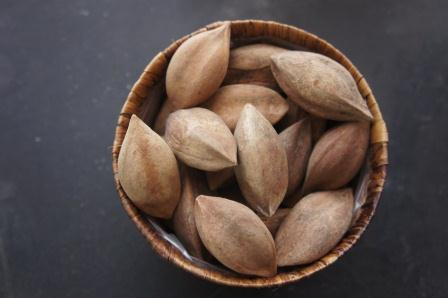With Pili as its Tree of Hope, Bicol region also takes pride of its PILI OIL, known for its distinct characteristics and various applications. Indeed, pili oil production is an emerging technology that could uplift not only the agriculture sector of the region but also as a source of livelihood.

Pili pulp oil is clear and may appear greenish yellow. It has 56.7% oleic glycerides, 13.5% linoleicglycerides and 29.3% saturated fatty acids. Based on the analysis done by DOST Region V, the oil has very low free fatty acid (FFA) content of 0.06% and moisture content of only 0.04% which assures longer shelf life.
Properties and Composition
Compared to olive oil, pili pulp oil has more beta carotene, a known source of Vitamin A, caroteneoids, tocopherols (vitamin E) and phytosterols. These substances are antioxidants that protect cells from oxidation and neutralize unstable free radicals. Pili pulp oil is also a good source of protein, iodine and calcium.
Uses
Pili oil can be used in salad dressings, fish canning, baking and in other food preparations. The oil contains natural germicide, anti-bacterial and anti-inflammatory agents effective in healing wounds and allergies. It is also suitable for people with delicate skin and helps prevent wrinkles with its anti-aging element. It also prevents acne and pimples. The oil is now used as a main ingredient in bath soaps and massage oil, and as an additive in anti-dandruff shampoo.
Indigenous knowledge gathered attests to its efficacy in treating skin diseases such as scabies and its deworming capability for livestock such as pigs and chicken.
Laboratory animal studies revealed that pili oil is effective in managing cholesterol and weight.
Source: bcarrd.com


may i kno please,when i buy an imported milking cow such as hosltein how much per head